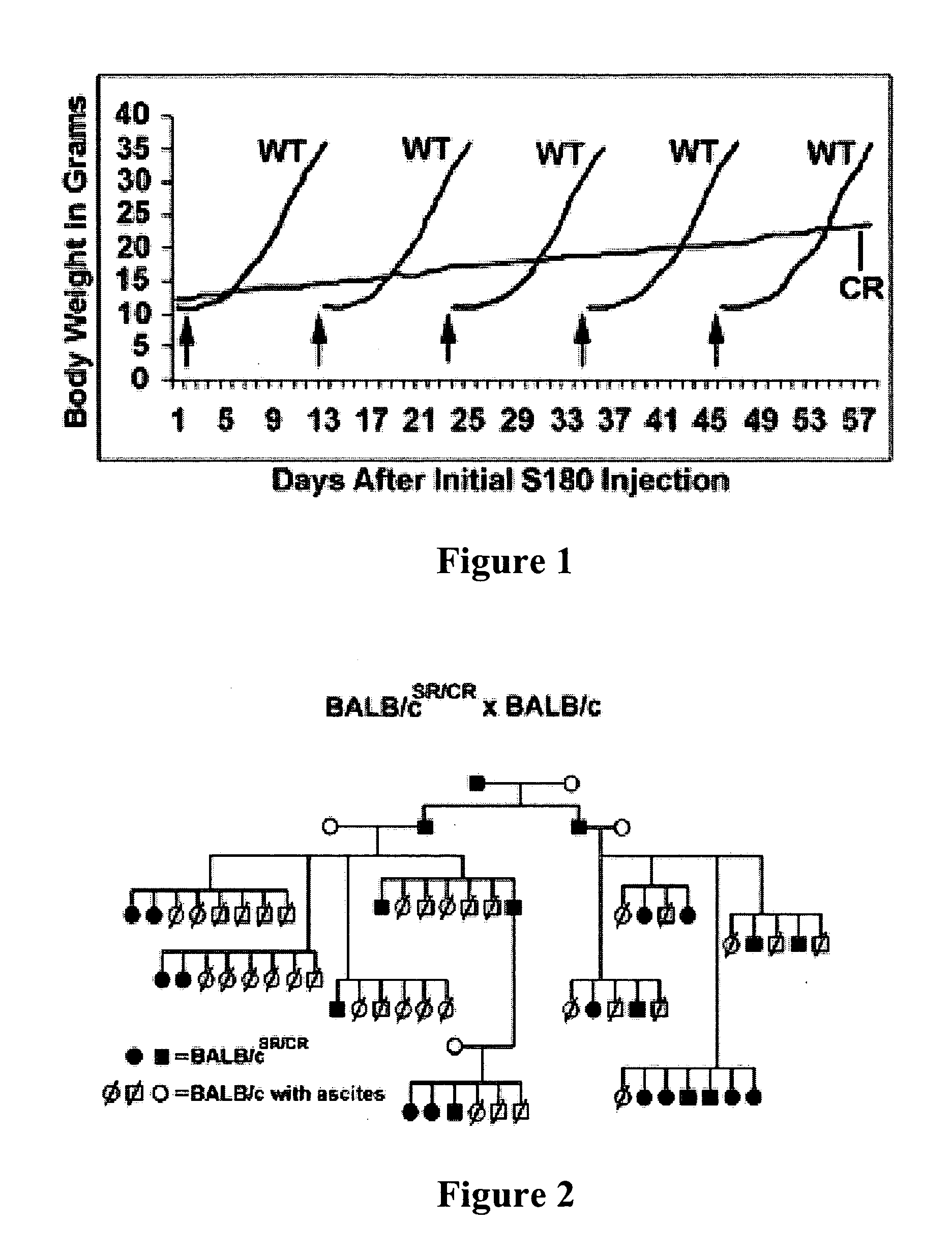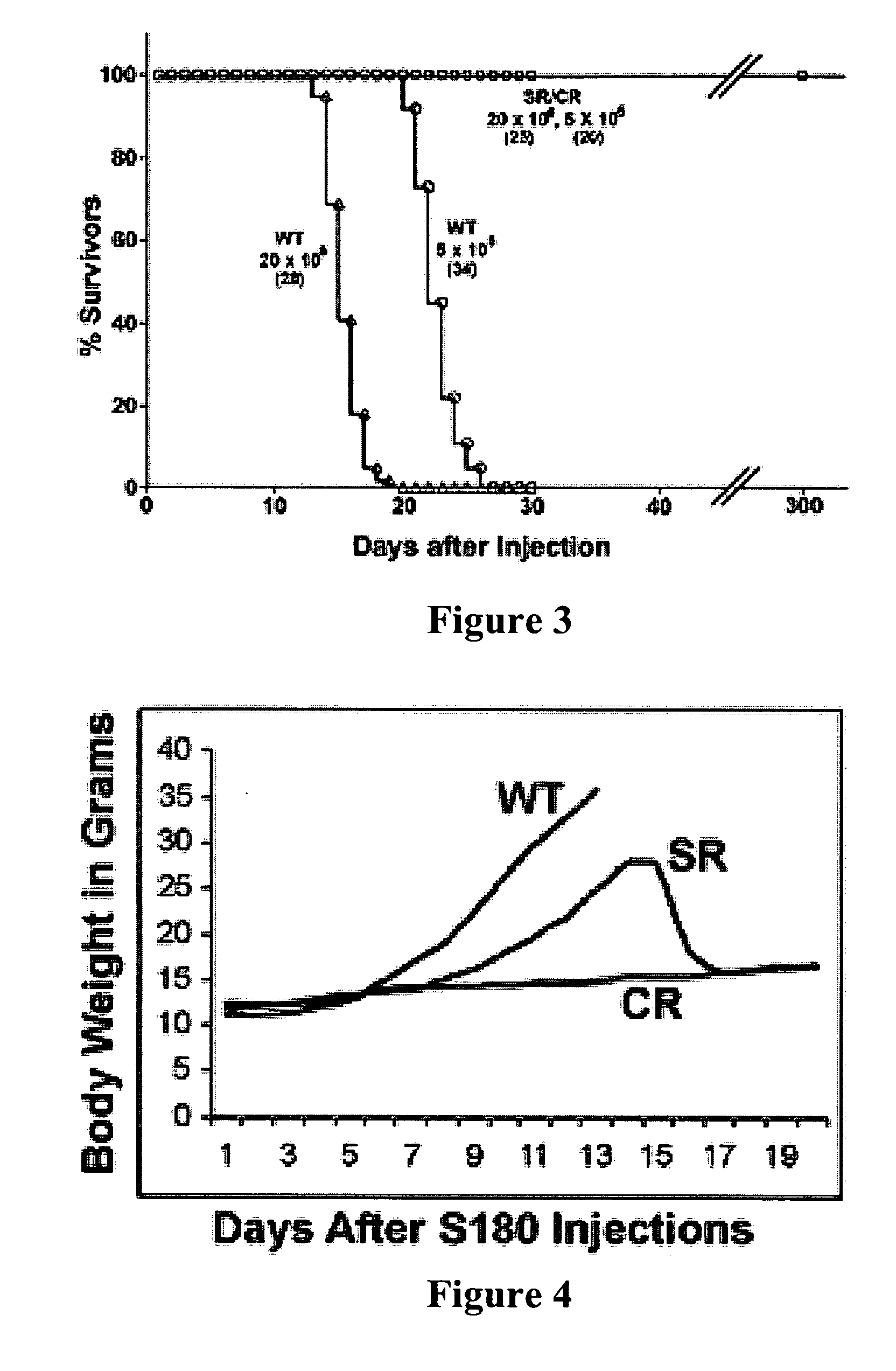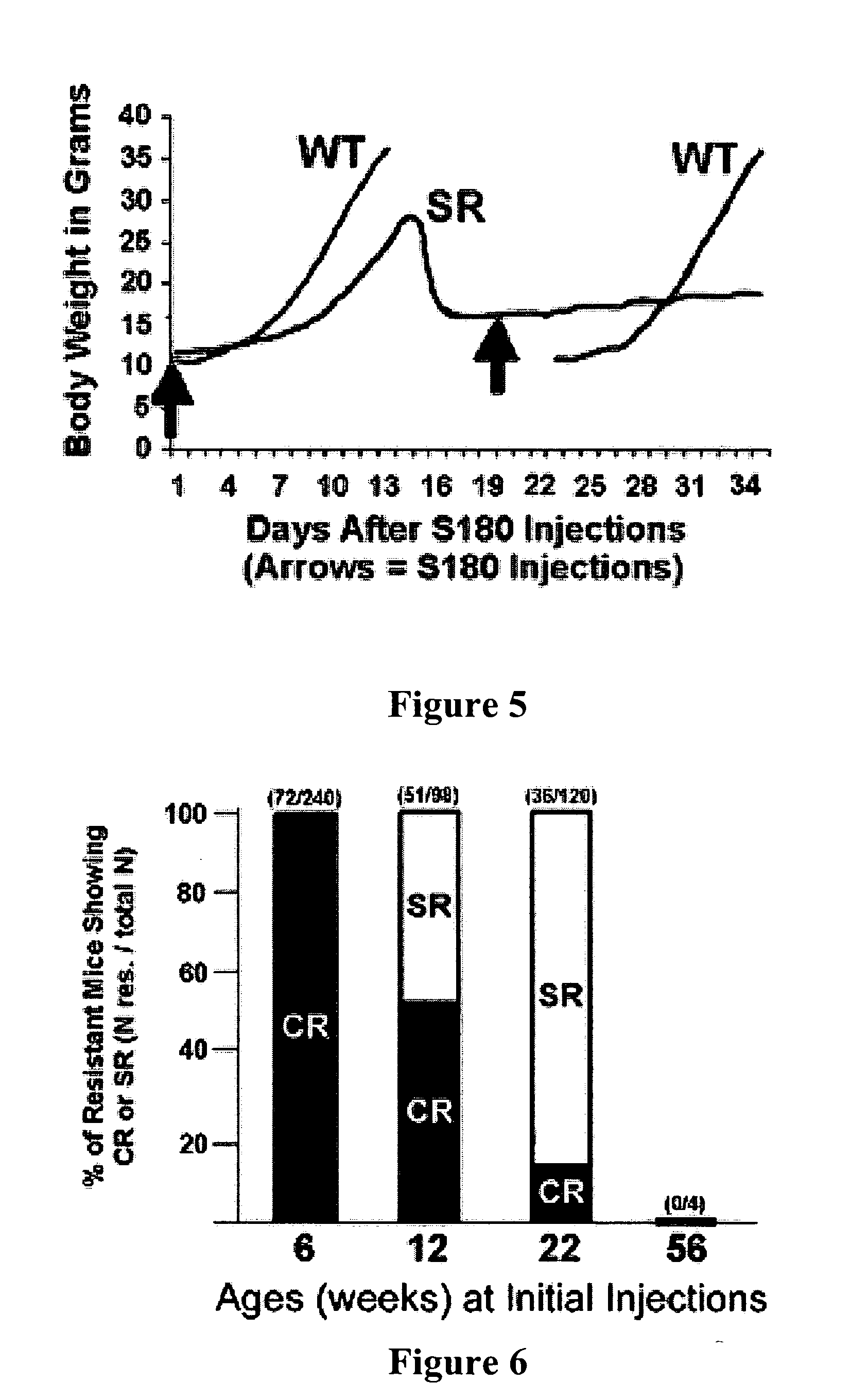Genetically determined mouse model of resistance to transplantable cancers
a mouse model and mouse technology, applied in the field of cancer resistant mice and mouse colonies, can solve the problem of elusive mechanism(s) of sr in humans and animals
- Summary
- Abstract
- Description
- Claims
- Application Information
AI Technical Summary
Problems solved by technology
Method used
Image
Examples
example 1
[0030] Materials and Methods
[0031] Cell lines and mouse strains. Mouse cells were from American Type Culture Collection. Meth A sarcoma was a generous gift from Dr. Lloyd Old (Ludwig Institute for Cancer Research, New York Branch). Mouse cancer cells were propagated in culture according to the supplier's recommendedations. BALB / c and C57BL / 6 mice were from Charles River, and CAST / Ei and athymic C57BL / 6foxn1 / foxn1 nude mice were from The Jackson Lab. Mice were housed in plastic cages covered with air filter tops, containing hardwood shavings as bedding, allowed free access to water and regular chow and exposed to a 12 hr fluorescent light / dark cycle.
[0032] Cytoprep and Histology. Hematoxylin and DAPI staining of peritoneal cells washed from mice were standard procedures. For immunocytochemistry of surface markers, fixed cells in cytopreps were probed with anti- CD4, CD8, CD11c, or CD45, F4 / 80, Ly6G and NK1.1. These were followed by rhodamine-conjugated secondary antibodies and coun...
example 2
[0054] Pedigree analysis of the CR and SR phenotypes. Outcross progeny were first injected with 2×106 S180 cells at 12 weeks of age. The pedigree (Shown in FIG. 9) indicates that the SR trait was inherited from a CR parent and the CR trait was inherited from an SR parent. The ratio of SR / CR was age-dependent determined by the time of the initial injection of cancer cells. Males are represented by squares and females by circles. Dark squares and circles are CR mice. Hatched squares and circles are SR mice. Clear circles represent control mice. Slashed squares and circles are S180-sensitive progeny.
example 3
[0055] Histologic appearance of S180 tumor cells in intraperitoneal implants in sensitive and resistant mice. S180 cells (20×106) injected i.p. 16 days before necropsy generated widespread ascites and peritoneal implants in wild type BALB / c mice, as typified by the metastatic implant near the renal capsule in (A). On the other hand, while a similarly injected SR / CR mouse failed to develop ascites cancers, a few small nodules attached to the peritoneal surface were noted and dissected for histology. These nodules were composed of small numbers of swollen cancer cells surrounded by a dense fibroblastic proliferation (desmoplasia) (data not shown).
PUM
| Property | Measurement | Unit |
|---|---|---|
| generation time | aaaaa | aaaaa |
| mass | aaaaa | aaaaa |
| diameter | aaaaa | aaaaa |
Abstract
Description
Claims
Application Information
 Login to View More
Login to View More - R&D
- Intellectual Property
- Life Sciences
- Materials
- Tech Scout
- Unparalleled Data Quality
- Higher Quality Content
- 60% Fewer Hallucinations
Browse by: Latest US Patents, China's latest patents, Technical Efficacy Thesaurus, Application Domain, Technology Topic, Popular Technical Reports.
© 2025 PatSnap. All rights reserved.Legal|Privacy policy|Modern Slavery Act Transparency Statement|Sitemap|About US| Contact US: help@patsnap.com



